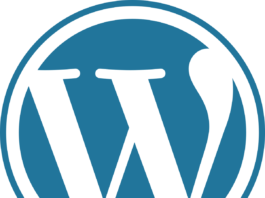Did you know that for every second faster your website loads, you increase conversions by 7%?
A fast loading website leads your website to longer sessions, improved engagement, and increased conversions. When people can access information fast, they’re more likely to stay on your page.
So now you’re probably wondering, “How fast should my website be?” Well, we’ve got all the answers!
we’ll answer questions like:
- What is page load time?
- How fast should my website be?
- Why does a fast loading website matter?
- How do you measure page speed?
- How do I improve my site load time?
1. What is page load time?
Page load time is the time it takes to download and display the entire content of a web page in the browser window (measured in seconds).
Page load time is complicated because your website doesn’t load all at once.
Your website loads in pieces and the load time varies for different:
- Pages
- Users
- Browsers
- Devices
- Internet speed
- And more
While some of these factors are out of your control, like a user’s Internet speed, you can optimize your site to ensure that your pages load correctly, so users have a positive experience.
It is usually measured in seconds and it is formed by two components:
- Network and Server Time: is based on the internet connection speed and on how rapidly static elements as photos are displayed
- Browser time: how long does it take to analyze and execute the entire document and make the page available for the interaction with users
There are three color zones your website’s page speed can fall into:
- Red zone (slow): Sites in this range have a score between 0-40. If your site falls in this section, your website is in the slowest third of all page loads.
- Yellow zone (average): If your site falls in the yellow zone, you have a score between 50-89. This color means that your website is in the middle third of all page load times.
- Green zone (fast): Ideally, you want to have a score of 90-100 and fall in the green zone. This section means that your website is the fastest third of all page loads.
If your site is in the red or yellow zone, you can use Google’s personalized recommendations to improve your site’s rating. Below your scores, Google provides advice for how you can improve your site’s load time.
Nowadays, especially for the popularity of eCommerce sites and online shopping, a fast page load time is essential for a website. First of all, page load time affects search engine rankings. Google uses a particular algorithm to determine a website positioning, and page speed is one of the factors analyzed. That means Google guides shoppers to faster web content.
There are many ways to improve this metric, but here are some of the most common:
- File Compression: Reduces the size of the CSS, HTML, JavaScript, images, and other web elements. (Check out ImageOptim for Mac to compress images).
- Minification: Optimizes the code by removing unused code, white spaces, comments, etc.
- Reducing redirects: Each time a web page redirects the browser to another server, the user faces an additional time for the request-response cycle to complete. Best to get rid of these if possible.
- CDN: A content delivery network (CDN) puts content geographically closer to your users so they can receive it quicker.
Conclusion
Websites with low-number page load times perform better on almost all fronts. They rank well in search engines, deliver more positive user experience, and see higher conversions and revenue.
Because average page weight is on the rise, it’s now more important than ever to continuously focus on improving page load time and performance. Open source tools can help you do this.
2. How fast should my website be?
Your website should load in two seconds or less. Users expect that your website will load quickly, with 53% of users abandoning your page if it takes longer than three seconds to load. If you want to keep people on your site, your website shouldn’t take longer than three seconds.
When you consider that the average website load time is 22 seconds, far too many businesses don’t have fast enough websites to keep people on them. This lack of speed is why slow-loading sites cause $2.6 billion in revenue loss annually.
3. Why does a fast loading website matter?
When a customer sits down to eat at a restaurant, slow service from the waiter often results in poor Yelp reviews and fewer future customers. Similarly, slow site speed can result in poor search engine rankings, lower overall site traffic, and negative user experiences.
Website speed, or website performance, refers to how quickly a browser is able to load fully functional webpages from a given site. Poorly performing sites that render slowly in a browser can drive users away. Conversely, sites that load quickly will typically receive more traffic and have better conversion rates.
Thankfully, it isn’t that hard to improve. There are plenty of tools, tips, and tricks you can use to help your site load faster and improve in traffic and search engine rankings.
4. How do you measure page speed?
The speed of your website has a direct impact on SEO and conversion rates. Not taking the time to make improvements can be a costly mistake.
Why? Users are far more likely to bounce from a slow website, and the probability of this happening increases by over 100% if a page load time goes from just 1s to 6s.
Page Speed Insights
We’ll start off with the best app on this list—Page Speed Insights by Google.
Over the years, Google has offered a page speed tool under a few different names, but the current iteration is hosted as part of Google Developers.
The beauty of the tool is that it not only provides a detailed description of how fast your site loads on desktop and mobile, but you’ll also get a step-by-step breakdown of exactly how to improve it.
Pingdom
The Pingdom Page Speed tool has been around for a while and provides a lot of insight into how to improve your site.
It’s similar to Google’s tool in that it breaks down specific fixes you can take right now to improve the speed and health of your site.
The reason it’s second on this list is that Google probably has a more accurate sense of what’s important for SEO since they are also the biggest search engine and Pingdom is just a third party.
GTmetrix
With GTmetrix you can hone in on what’s making your site load slowly and fix it. Like many of the other tools listed here, GTmetrix provides a letter grade to show how well your site loads.
You can also set automatic alerts to get notified if your site suddenly starts loading at a speed below a certain threshold.
5. How do I improve my site load time?
There are tons of factors that influence how long each page on your site takes to load, so there are many different steps you can take to increase your speed and improve user experience.
In this post, we’ll go over some tips and best practices you can use to decrease your load times and improve your site’s performance.
1. Minimize HTTP requests
Luckily, there are several ways you can reduce the number of HTTP requests while maintaining high-quality, rich web designs.
- Combine Files – Using external style sheets and scripts is important to keep them from bogging down your page load times but don’t have more than one CSS and one script file.
- Use CSS Sprites – When you combine most or all of your images into a sprite, you turn multiple images requests into just one. Then you just use the background-image CSS property to display the section of the image you need.
- Image Maps – Image maps are not as popular as they once were, but when you have contiguous images they can reduce multiple HTTP image requests down to just one.
According to Yahoo, 80% of a Web page’s load time is spent downloading the different parts of the page, like images, stylesheets, and scripts.
An HTTP request is made for each one of these elements, so the more on-page components, the longer it takes for the page to render.
The first step to minimizing your requests is to figure out how many your site currently makes, to use as a benchmark.
2. Minify and combine files
Now that you know how many requests your site makes, you can get to work on reducing that number. The best place to get started is with your HTML, CSS, and JavaScript files.
These are extremely important files, as they determine your site’s appearance.
They also add to the number of requests your site makes every time a user visits it.
You can reduce this number by “minifying” and combining your files. This reduces the size of each file, as well as the total number of files.
This is especially important if you use a templated website builder. These make it easy to build a website, but they sometimes create messy code that can slow your site considerably.
Minifying a file involves removing unnecessary formatting, whitespace, and code.
Since every unnecessary piece of code adds to the size of your page, it’s important that you eliminate extra spaces, line breaks, and indentation. This ensures that your pages are as lean as possible.
3. Reduce server response time
One of the biggest factors in how quickly your page loads is the amount of time your DNS lookup takes.
A DNS, or domain name system, is a server with a database of IP addresses and their associated hostnames. When a user types a URL into their browser, a DNS server is what translates that URL into the IP address that indicates its location online.
A DNS lookup, then, is the process of a finding a specific DNS record. You can think of it as your computer looking up a number in a phone book.
For example, let’s say you wanted to visit the URL ubnt.com. You’d type this into your browser — but that means very little to your computer.
Your ISP will perform a DNS lookup to find the IP address associated with that URL.



